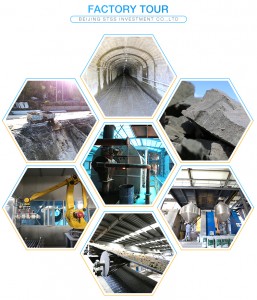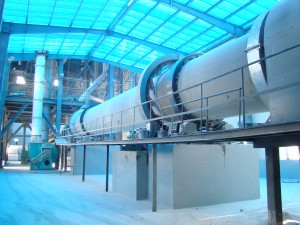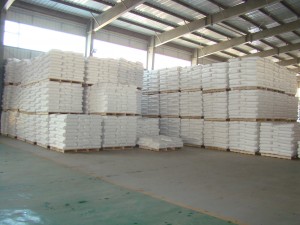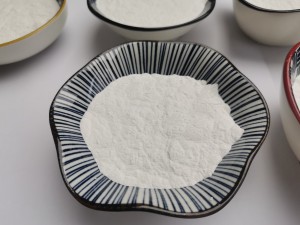 1 . The status of my country’s diatomite industry Since the 1960s, after nearly 60 years of development, my country has formed a diatomite processing and utilization industrial chain second only to the United States. Currently, there are three production bases in Jilin, Zhejiang and Yunnan. The diatomite market is mainly filter materials and insulation materials. In terms of product structure, Jilin takes the production of filter aids as its leading products, Zhejiang takes the production of thermal insulation materials as its leading products, and Yunnan takes the production of low-end filter aids, thermal insulation materials, fillers and light-weight wall materials as its leading products. From the perspective of domestic production, my country’s diatomite output has increased year by year in recent years. As of 2019, my country’s diatomite output was 420,000 tons, a year-on-year increase of 1.2%. Diatomite is used in many fields such as filter aids, thermal insulation materials, construction, papermaking, fillers, catalysts, soil treatment, diatom mud, medicine and so on. It has broad application prospects, but some application fields have not yet been developed and utilized on a large scale.
1 . The status of my country’s diatomite industry Since the 1960s, after nearly 60 years of development, my country has formed a diatomite processing and utilization industrial chain second only to the United States. Currently, there are three production bases in Jilin, Zhejiang and Yunnan. The diatomite market is mainly filter materials and insulation materials. In terms of product structure, Jilin takes the production of filter aids as its leading products, Zhejiang takes the production of thermal insulation materials as its leading products, and Yunnan takes the production of low-end filter aids, thermal insulation materials, fillers and light-weight wall materials as its leading products. From the perspective of domestic production, my country’s diatomite output has increased year by year in recent years. As of 2019, my country’s diatomite output was 420,000 tons, a year-on-year increase of 1.2%. Diatomite is used in many fields such as filter aids, thermal insulation materials, construction, papermaking, fillers, catalysts, soil treatment, diatom mud, medicine and so on. It has broad application prospects, but some application fields have not yet been developed and utilized on a large scale.
2. Development and utilization of diatomite in my country
(1) The development of Jilin diatomite resources began in the 1950s, and was mainly used for heat preservation and refractory materials in the early days; the development and production of filter aids and catalysts began in the 1970s; microporous calcium silicate insulation products were developed in the 1980s, and Conduct research and development for agricultural applications. Since the 1990s, diatomite has been a new type of environmentally friendly material, and the market demand has continued to increase, attracting a large number of scientific research units and enterprises to conduct in-depth research and product development, and the trend of concentration in the diatomite industry has gradually emerged. There are two provincial-level diatomite parks, namely the Linjiang Diatomite Industrial Concentration Zone and the Badaogou Diatomite Characteristic Industrial Park in Changbai County. At present, Jilin Baishan has initially formed a diatomite product system with filter materials, functional fillers, ecological building materials, and carrier materials as the main products. Among them, filter aids, the leading product of filter materials, account for more than 90% of the national market share; functional fillers, such as rubber reinforcing agents, plastic additives, paper additives, lightweight paper fillers, feed additives, matting agents, cosmetics and toothpaste fillers, etc. The output exceeds 50,000 tons; ecological building materials, such as diatom soil slabs, floor tiles, paint, wallpaper, ceramic tiles, etc., have been produced on a large scale and have good development prospects; carrier materials, such as catalyst carriers, nano titanium dioxide carriers, fertilizers and pesticide carriers, etc., It has the characteristics of slow release, environmental protection, and non-solidification of the soil, and has a broad market prospect.
 (2) Yunnan has more enterprises producing diatomite-related products, but currently there are fewer normal businesses. Diatomite mining in Tengchong is basically small-scale open-pit mining by farmers. According to the environmental protection requirements of the local government, diatomite deep processing enterprises in Tengchong have basically stagnated, and there is basically no product outflow in Tengchong or Baishan enterprises for processing. The main products of diatomaceous earth enterprises in Xundian County of Yunnan include road-use diatomaceous earth, filter aids, thermal insulation materials, pesticide carriers, rubber reinforcing agents, etc. Among them, pesticide carriers and sewage treatment agents are used in a small amount, and no large-scale industry has been formed. Coupled with local environmental protection policies, Yunnan’s diatomite has only sporadic products.
(2) Yunnan has more enterprises producing diatomite-related products, but currently there are fewer normal businesses. Diatomite mining in Tengchong is basically small-scale open-pit mining by farmers. According to the environmental protection requirements of the local government, diatomite deep processing enterprises in Tengchong have basically stagnated, and there is basically no product outflow in Tengchong or Baishan enterprises for processing. The main products of diatomaceous earth enterprises in Xundian County of Yunnan include road-use diatomaceous earth, filter aids, thermal insulation materials, pesticide carriers, rubber reinforcing agents, etc. Among them, pesticide carriers and sewage treatment agents are used in a small amount, and no large-scale industry has been formed. Coupled with local environmental protection policies, Yunnan’s diatomite has only sporadic products.
(3) Due to local environmental protection policies in Zhejiang, diatomite enterprises have basically been integrated, most of which have been shut down, and production lines have been dismantled. There are currently only four diatomite enterprises in Shengzhou. Zhejiang’s diatomite resources are of poor quality and can only be used for insulation boards, refractory bricks, etc., and cannot be used to produce filter aid products. Enterprises in Shengzhou, Zhejiang, produce Baishan diatomite for filter aids, with an annual production of 10,000 to 20,000 tons, and they are all scattered markets that Baishan local companies do not do. The rest produce fillers, insulation boards and refractory and insulation bricks.
(4) Diatomite in Inner Mongolia belongs to the “Jiwo mine”, and the mining conditions are poor. The raw diatomite that can be mined is basically linear algae or tubular algae, with poor quality and unstable product performance. It is limited to plates and some catalysts. Product, the market share is very small.
3 .China’s diatomite consumption structure my country’s diatomite products are mainly used for domestic consumption, and a small amount are used for export. my country imports a small amount of high value-added diatomite every year. After more than 60 years of development, it can now produce filter materials, thermal insulation materials, functional fillers, building materials, catalyst carriers and cement mixed materials and other products, which are used in food, medicine, chemicals, building materials, environmental protection, petroleum, metallurgy, papermaking, rubber, There are more than 500 kinds of products in agriculture, animal husbandry and other industries, especially in the fields of filtration materials, adsorption purification, functional fillers, and soil improvement. The three major diatomite bases in Jilin, Zhejiang and Yunnan have been established.
 Diatomite resources in my country are mainly used for filter materials and insulation materials. Among them, filter aid is the main use and mainstream product of diatomite. The output of filter aid generally accounts for 65% of the total sales of diatomite; fillers and abrasives account for about 13% of the total output of diatomite, and the adsorption and purification materials are about It accounts for 16% of the total output, soil improvement and fertilizers account for about 5% of the total output, and the others are about 1%.
Diatomite resources in my country are mainly used for filter materials and insulation materials. Among them, filter aid is the main use and mainstream product of diatomite. The output of filter aid generally accounts for 65% of the total sales of diatomite; fillers and abrasives account for about 13% of the total output of diatomite, and the adsorption and purification materials are about It accounts for 16% of the total output, soil improvement and fertilizers account for about 5% of the total output, and the others are about 1%.
In general, the output of diatomite in my country is showing a steady upward trend, mainly involving flux-calcined products, low-temperature calcined products, non-calcined products, and non-calcined granulation. With the development of my country’s economy and the process of urbanization, my country’s demand for diatomite resources is increasing. From 1994 to 2019, my country’s apparent consumption of diatomite has increased year by year.
Post time: Aug-02-2021

